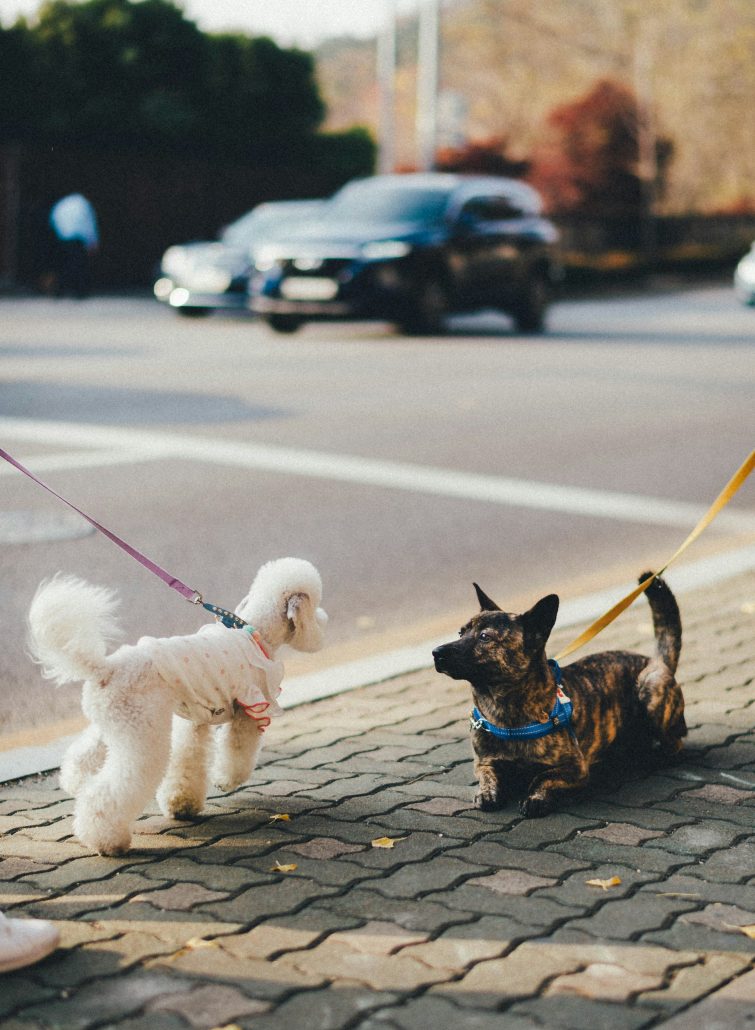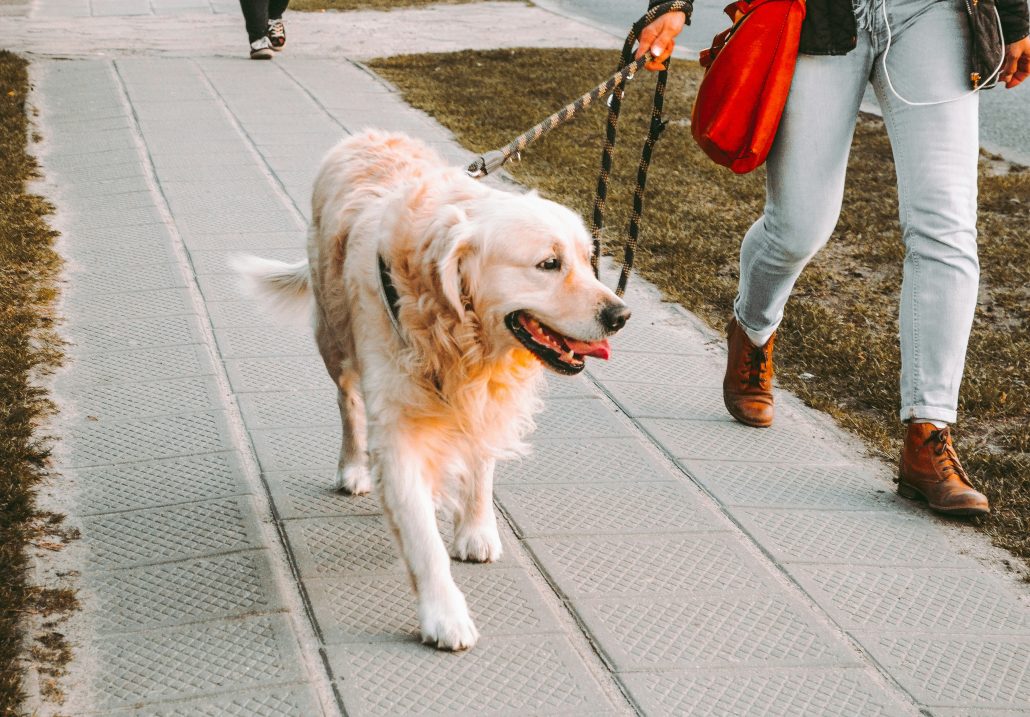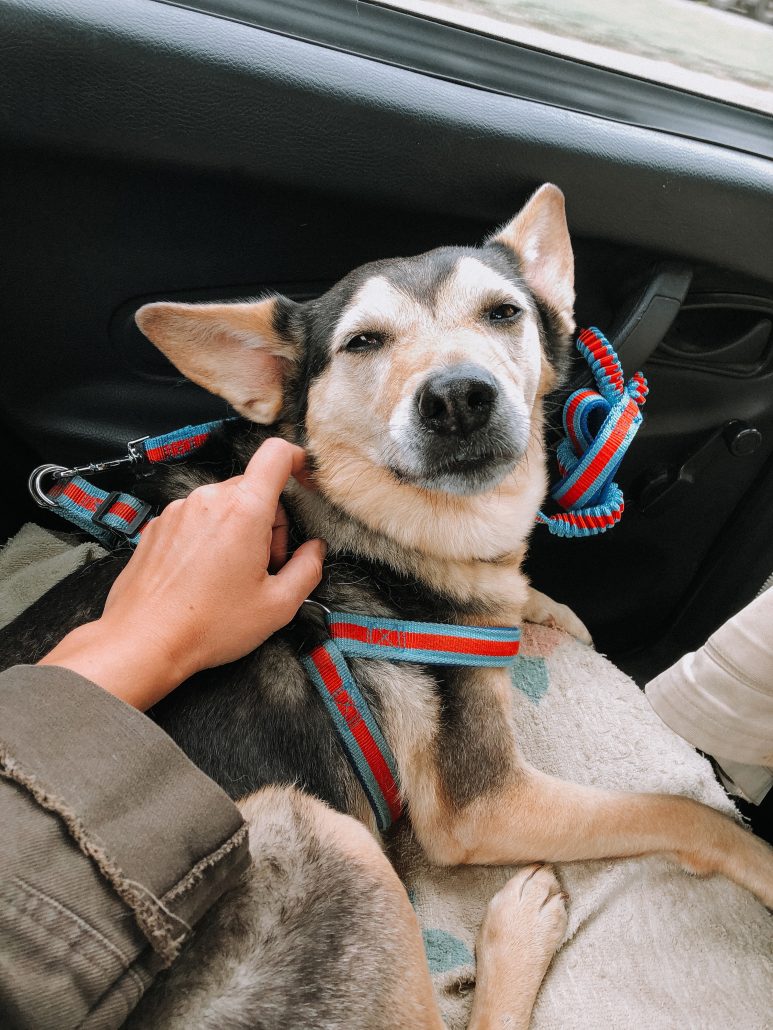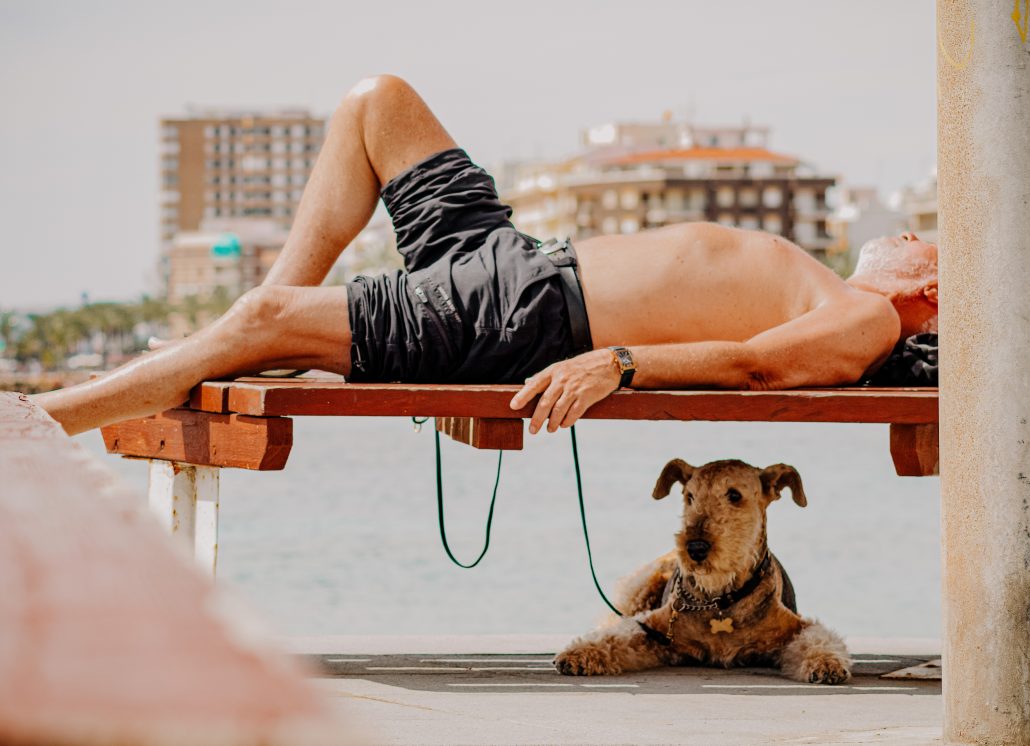
In a world buzzing with screens and schedules, walking your pet a simple joy that can be overlooked, but is an activity your pet looks forward to!
While it is one of your companions favourite activities (outside their morning treat and evening snuggles), about 40% of owners do not regularly walk their pets! Walking your pet isn’t just a routine chore—it’s an adventure waiting to happen and the perfect opportunity for them to explore the world, exercise, and bond with you.
In this post, we’ll explore everything you need to know about walking your pet. From the benefits of regular walkies to top tips and tricks for making the most out of your outside time. So, grab your leash, hook up your pup and let’s get started!
The Benefits Of Regular Walks
Depending on where you live, the goal for going on a walk is for your pup to do their business. While it is true that regular walks are essential to keeping your carpet and floors clean (especially if you live in a home with limited outdoor space), going for regular walks offers a number of benefits—for both you and your pet!
A Fit and Healthy Pet
- Weight and Body Condition: Pet obesity is a rising concern, and if left untreated can cause a host of health risks. Regular walks are a key player in maintaining an optimal weight and body condition for your beloved friend.
- Joint Health: Just like humans, pets get stiff when sedentary. Regular walks keep their joints in motion, enhancing flexibility and preventing stiffness. This is particularly beneficial for older pets – but remember to reduce the intensity and length of walks to your aging pets.
- Digestive and Urinary Health: Many pets prefer to “go” on a schedule, so establishing a regular walking routine can help in preventing constipation as well as reduce the risk of bladder infections.
Exercise for the Mind
- Stimulation for the Brain: Dogs thrive on mental stimulation and a walk provides a change of scenery, new smells, and novel experiences, warding off boredom and destructive behaviours, like chewing your favourite trainers or digging holes in the garden
- Quality Time and Bonding: What better way to deepen your bond than a leisurely walk? Spending one-on-one time not only deters attention-seeking behaviours but also fosters a stronger connection between you and your pup.
- Socialization and Training: Regular walks also offer various opportunities for socialisation, which are an essential foundation for a well-behaved pet. It’s a classroom without walls where your dog learns to navigate the new people, pets and experiences.
- Stress and Anxiety Reduction: In a Finnish study, it was observed that dogs, like humans, can experience anxiety. Daily walks can serve as a therapeutic adventure, alleviating stress, releasing excess energy, and promoting better sleep.
Personal Health: A Win-Win for You and Your Pet!
- Outside Motivation: For pet owners, daily walks serves as motivation to increase their physical activity. Many of us sit at a desk all day, and regular walks with your pet ensures you get some much needed exercise.
- Mood-Boosting Magic: We’ve all hear the term “mental health walk” and it’s true! The endorphins released from daily walks improves mental health, reducing stress levels and promoting an overall sense of calm and contentment.
- Improved Sleep: A night time walking routine can contribute to better sleep quality for both pet and owner.

How Often Should I Walk My Dog?
No matter your dog’s size, age, or breed, routine physical activity is the key to a happy and healthy furry friend. But the burning question remains – how often should you walk your dog? There are a number of factors that go into how often you should walk your dog for. These include:
- Breed: Different breeds have varying energy levels and exercise needs. Understanding your dog’s breed characteristics is essential in determining the ideal walking routine.
- Size, Age, and Health Conditions: Size matters when it comes to walks. Smaller dogs may find a single daily walk sufficient, while larger, high-energy breeds may require multiple walks to expend their energy.
- Living Conditions: The environment in which your pup lives also plays a role. Urban settings might demand more frequent, shorter walks, while suburban or rural areas may allow for longer, less frequent outings.
Another common question is how long you should take your pup out for. While the above are important considerations, every dog is different, so the best way to determine how much exercise your companion can handle is to leash up and go one a walk!
While you are out and about, keep a close eye on your dog’s energy levels. Are they setting a comfortable pace or slowing down? If you find that your dog begins to slow, they have likely walked enough and ready to go home.
Once home, observe their behaviour. A well-exercised dog should be settled and moderately tired but not exhausted. Immediate flopping down or excessive water drinking might signal overexertion and should go for a shorter stroll next time.
If, after a long walk, your dog starts limping, it is important to seek professional advice. Get in touch with your vet to rule out underlying injuries and issues as well as get advice on an exercise program that aligns with your dog’s health.
Read more: Keeping Your Senior Dog Active: Tips and Strategies for a Happy and Healthy Furry Friend
Choosing the Right Walking Equipment
Choosing the right walking equipment is crucial for both your pet’s comfort and safety. Here are some tips to help you make the best choices:
- Collar or Harness: While collars are suitable for most pets, harnesses are recommended for dogs with respiratory issues or those prone to pulling as they distribute the pressure evenly and reduce the strain on your companion’s neck.
- Leash Length: The length of the leash will also depend on your pet’s size and behaviour. A standard leash of 1.2 metres t is suitable for most dogs, providing them with enough freedom to explore while still maintaining control. Retractable leashes can be useful for well-trained dogs in open areas.
- Collar Tags: Ensure your pet’s collar has identification tags with your contact information. In case they wander off during a walk, it increases the chances of a safe return.

Preparing for a Successful Walk with Your Pet
Now that you’ve got your pup leashed (or harnessed up) it’s time to get walking. The key to a successful walk starts with proper preparation. Here are some steps you can take to ensure an enjoyable experience for both you and your furry friend:
- Plan the Route: Before heading out, decide on the route you want to take. Consider your pet’s preferences, such as quiet streets or parks, and choose a path that provides a variety of stimulating sights and smells.
- Check the Weather: Noone wants to get caught in the rain, so be sure to keep an eye on the weather forecast to ensure suitable conditions for your walk. Similarly, extreme heat or cold can be dangerous for your pet. If it’s too hot, consider walking early in the morning or late in the evening when temperatures are cooler.
- Gather Essentials: Carry essential items such as waste bags, treats, water, and a portable bowl. These will come in handy during the walk, especially if it’s a long one!
- Warm-Up: Many pet’s can benefit from a warm-up before physical activity. Start with a few minutes of gentle play to prepare their muscles and joints for the walk.
- Positive Reinforcement: Reward your pet with praise or treats for good behaviour during the walk. This encourages them to stay focused and follow your cues.
Read More: Is It Too Hot Outside for Your Pet? Warning Signs Every Pet Owner Should Know
Safety Tips for Walking Your Pet
Ensuring the safety of your pet during walks is of utmost importance, especially in crowded or unfamiliar settings. By following these safety tips, you can minimise potential risks and make the experience enjoyable for the both of you:
- Leash Control: Always keep your pet on a leash, unless you’re in a designated off-leash area. This prevents them from running into traffic, chasing other animals, or getting lost.
- Identification: Ensure your pet is wearing a collar with identification tags and is microchipped. In case they get separated from you, this increases the chances of a safe return.
- Traffic Awareness: Be aware of your surroundings, especially when crossing roads. Train your pet to sit and wait for your command before crossing. Use designated crosswalks and follow traffic signals.
- Avoid Toxins: Keep your pet away from potentially toxic plants, chemicals, or substances during the walk. Be cautious of discarded food, which may be harmful if ingested. Be sure to contact your emergency vet if you suspect they may have!
- Hydration: Carry a water bottle and a portable bowl for your pet to drink from during the walk, especially on hot days as this prevents heatstroke and dehydration.
Read More: Understanding Asthma in Pets & Nurturing Respiratory Health

Fun Activities to Incorporate Into Your Pet's Walk
Walking your pet doesn’t have to be a monotonous routine. Why not make it fun? By making it exciting and engaging you can transform a simple walk into a thrilling adventure that benefits both you and your furry friend!
- Training Exercises: Use the walk as an opportunity for training. Teach your pet basic commands such as sit, stay, or heel. Engage them in fun tricks like rolling over or giving a high-five.
- Interactive Toys: Bring along interactive toys that your pet can play with during the walk. These toys can keep them entertained and mentally stimulated while on the move.
- Sniffing Games: Allow your pet to indulge in their natural instinct to sniff. Play games where they have to find treats hidden along the walk route. This engages their sense of smell and provides mental stimulation.
- Agility Exercises: Incorporate agility exercises into your pet’s walk by using objects like cones or low hurdles. Encourage them to jump or go around obstacles, providing physical exercise and mental challenge.
- Socialisation Opportunities: Look for dog parks or areas where your pet can socialize with other animals. This allows them to make new friends and burn off energy through play.
- Variety of Routes: Switch up your walking routes to keep things interesting. Explore different neighbourhoods, parks, or trails to provide new sights and smells for your pet to enjoy.

Discover A New Leash on Life
Walking your pet is more than just a physical activity; it is a way to connect, bond, and provide mental stimulation. By following the tips and tricks outlined in this article, you can master the art of walking your pet and make it an enjoyable and enriching experience for everyone involved!
For any additional guidance on your pet’s well-being or to book them in for a regular check-up, don’t hesitate to reach out to our expert team at The House Call Vet! Our dedicated professionals are here to support you on every step of your pet parenting journey. Let’s ensure that each walk is not just a routine but a cherished chapter in the story of your pet’s health and happiness. Happy walking!

